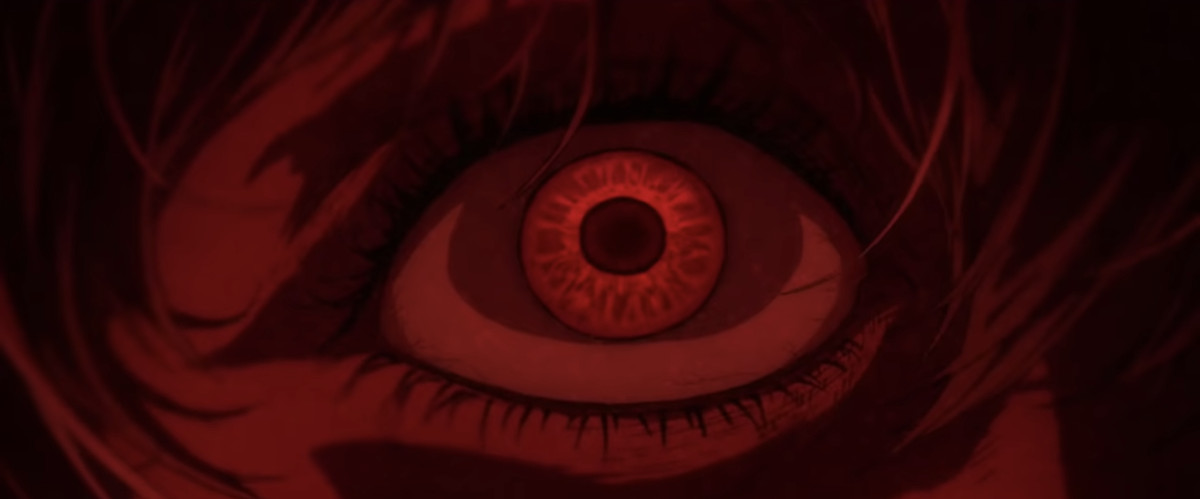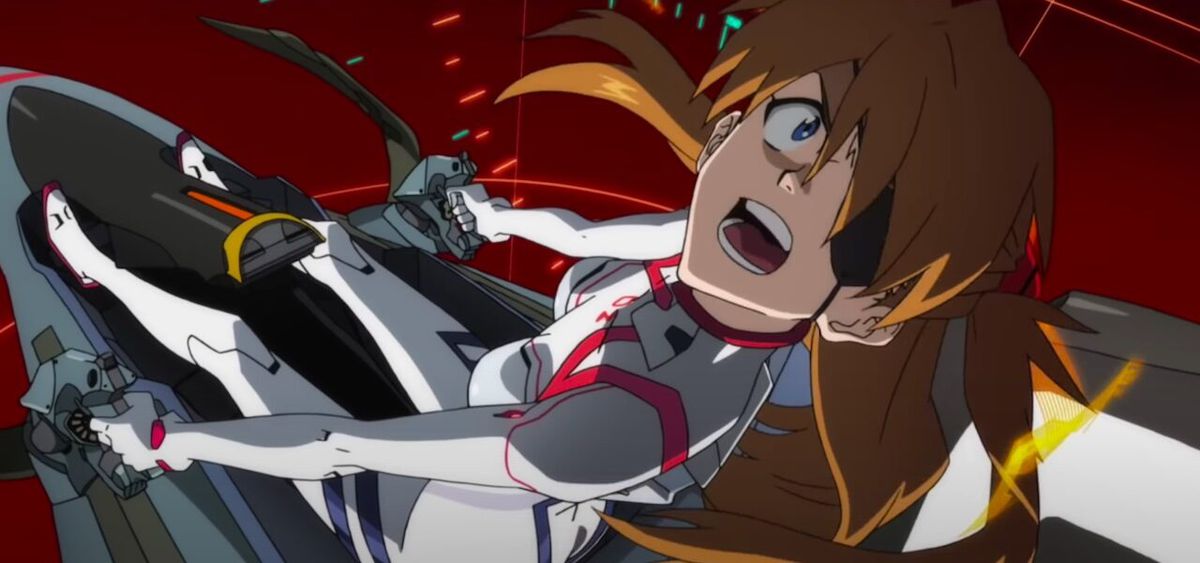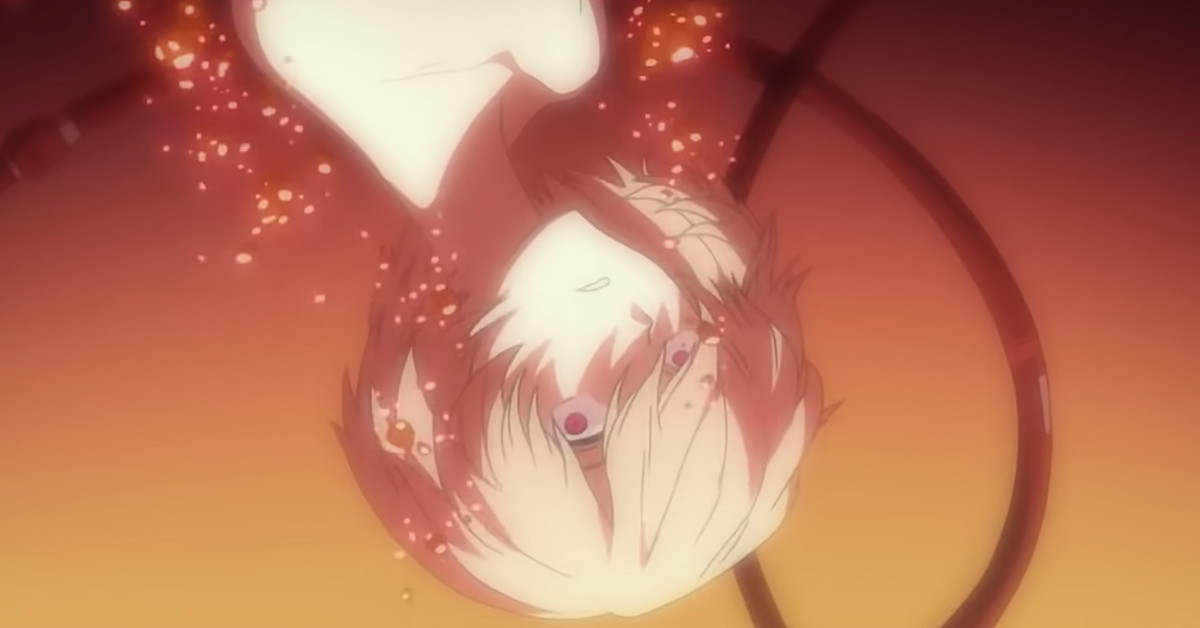[Ed. note: This review of the final Evangelion movie, Evangelion 1.0+3.0: Thrice Upon a Time, is being published in accordance with the studio’s review embargo. The film will premiere on Amazon Prime Video on Aug. 13.]
The end of Evangelion has arrived — for real, this time.
Twenty-six years after the TV premiere of Neon Genesis Evangelion (and 24 years after its theatrical alternate ending, The End of Evangelion), Hideaki Anno’s seemingly never-ending saga has finally come to a close. The much-awaited, long-delayed fourth installment in the Rebuild of Evangelion film series that retells the original TV series’ story, Evangelion 1.0+3.0: Thrice Upon a Time scales the steep emotional walls built by its predecessors, and bloodies its fingers during the climb. But it also features unusually quiet stretches, which allow for moving reflections involving the film’s lead characters, young mecha pilots Ikari Shinji (Ogata Megumi), Shikinami Asuka Langley (Miyamura Yūko) and Ayanami Rei (Hayashibara Megumi). It’s bold, dazzling, introspective, and occasionally disturbing, which makes it a fitting capper to not only the new film series, but to the Evangelion story as a whole.
A sweeping, action-packed opening re-introduces the conflict between NERV — now a nihilistic death cult led by Shinji’s father, Ikari Gendo (Tachiki Fumihiko), a man hell-bent on triggering the apocalypse — and WILLE, the emergent resistance force captained by a stoic Katsuragi Misato (Mitsuishi Kotono). Shinji’s once-upbeat guardian now commands a battalion led by a pair of Evangelions piloted by Asuka and Mari (Sakamoto Maaya). By this point, 14 years have passed in-world since the Rebuild story began with 2007’s Evangelion: 1.0 You Are (Not) Alone. In that time, NERV’s horde of new Evangelion units have become indistinguishable from the monstrous, interdimensional “Angels” it was once tasked with defeating.
To thwart them, WILLE assembles fleets of floating naval vessels in increasingly complex formations. (One of these ships, the Wunder, continues to house Shinji’s former Eva, Unit 01.) While the opening mainly establishes the film’s war-torn backdrop, it takes the form of a kaleidoscopic tableau, where the scale handily dwarfs the series’ previous mecha-kaiju punch-ups. It establishes, once and for all, how unthinkably enormous, interconnected, and all-consuming humanity’s creations in this series have become. The action looks spectacular, but feels increasingly desperate.
At 155 minutes in length — an hour longer than 2012’s Evangelion 3.0 You Can (Not) Redo — the film is not only packed with action spectacle, it features a significant amount of downtime. Opening shortly after the events of the previous film, it immerses the audience in a world that has been attempting to heal and rebuild, as Shinji, Asuka, and Rei grow accustomed to life in a tiny, self-sustaining village surrounded by debris and populated by kindly volunteers. These scenes portray the kind of rustic simplicity and zest for life that are at stake, as the threat of a fourth and likely final apocalypse looms. In the scope of the larger series, this brief escape provides not only hints of the kind of normalcy these child soldiers have never known, but a serene portrait of what their lives might’ve been, if they weren’t bound by damaging circumstances and the whims of cruel adults.
This is the story being told in literal terms, but “literal” is rarely the series’ lingua franca. The Rebuild films, which began as a reboot of the TV show, have never been explicit about their connection to previous versions of the story, but this rural escape feels like a stolen glimpse of a much kinder alternate reality. But of course, so long as Shinji, Asuka and Rei are piloting the Evangelions — whether by choice, or because they’re among the only ones who can — happiness is only a fantasy. The film bides its time during these village segments, then begins an extended, action-heavy plunge toward a realm of abstraction, amid an enormous crescendo that contorts the series’ already unsettling imagery, twisting it far enough around itself to create something entirely new.

Image: Amazon Studios
The character drama underlying the action packs an emotional wallop. Shinji still hates himself. In trying to save the world and the “original” Rei, in 2009’s Evangelion: 2.0 You Can (Not) Advance, he was manipulated into triggering the apocalyptic Third Impact, and in his desperate attempts to undo the damage in 3.0, he nearly triggered a Fourth. That cataclysm was prevented, at least temporarily, but it led to the horrific death of Nagisa Kaworu (Ishida Akira), which Shinji witnessed up close. Like in Neon Genesis, Kaworu, an “Angel” in human form, was the only person to show Shinji unconditional love, so watching him die and perhaps even causing his death has left Shinji frozen in a moment of horrific grief and inescapable trauma as he re-enters the world.
Shinji cannot fathom deserving the kindness the villagers show him. For fear of causing more harm, he can barely make decisions. Asuka, who undoubtedly cares for him, loathes him for his indecisiveness and the ways it has hurt her, to the point that she’s violent toward him, and not in the cutesy, slapstick manner seen in Neon Genesis. For fans who have long cared for these characters, their continued physical and emotional torment is incredibly hard to watch.
These beats feel familiar, since they reflect the story told in Neon Genesis and The End of Evangelion, but they arrive with the added layer of Shinji and Asuka having been trapped in their teenage bodies for the 14-year gap between the second and third films, as a physical side effect of piloting their Evas. This is both a key to Asuka’s frustrations at being unable to move forward, and the ultimate expression of Shinji’s arrested emotional development, which in turn challenges a more world-weary Misato, who’s torn between protecting Shinji like she used to, and saving the world at any cost. Meanwhile, the new Rei — a copy of the version in prior films, who was herself a clone of Shinji’s mother — is a person refracted several times over. She lacks a sense of identity, so she struggles to overcome the same emotional numbness that continues to plague Shinji. Her journey, though it doesn’t take up too much of the runtime, is particularly moving, since it offers the most stark and direct contrast between living under Gendo’s manipulative thumb, as she did in 3.0, and finally escaping it.
Freedom, in the world of Thrice Upon a Time, is a rare and valuable thing. When it finally appears, it takes the form of little joys and simple pleasures — moments in which other people share the burden of existence — and it begins to feel even more precious as Gendo’s planned cataclysm draws near.
As it turns out, Gendo, perhaps more than any other character, is the definitive stamp separating the Rebuild series from prior iterations. His fanatical focus on “Instrumentality” — the melding of all human consciousness so he can finally reunite with his late wife — has long been an implicit reason for his rejection of Shinji. In previous conclusions to the story (episode 26 of the Neon Genesis series, and The End of Evangelion), Shinji’s self-actualization, his rejection of Instrumentality, and his desire to continue existing were an implicit rejection of Gendo in turn. But in this film, their fraught father-son dynamic is a much more central part of the story. As this conflict unfurls, the route taken by the film feels both familiar, in its use of impressionistic montages and a wild variety of animated aesthetics, and completely novel, because of the ideas and images those montages contain, and what weaknesses they unearth.
The plot is suitably dense for an Evangelion film, with lore and mythological concepts becoming relevant mere moments after they’re introduced. The series has always laid its track directly in front of the train, but the logistics behind, for instance, some glowing crucifix or holy lance popping into existence are hardly the most important parts of the saga. The sudden injection of these things into a given scene is usually a function of Gendo being 10 steps ahead of anyone else, as the heroes at WILLE struggle to wrap their minds around literally hellish concepts just to keep pace.

Image: Amazon Studios
Viewers may question what those concepts mean for the plot, but an infinitely more intriguing question is what they mean for a story where characters — even minor ones — are hopelessly outgunned, against gargantuan symbols of their own cosmic insignificance. What is the story of the Evangelion franchise, if not a search for even the most fleeting spark of human value in the face of vast, ceaseless nihilism?
Anno and co-directors Tsurumaki Kazuya, Maeda Mahiro, and Nakayama Katsuichi pull off the herculean feat of ending the same story for a third time while also ensuring that this ending finally feels definitive. They offer a meta-textual explanation for this finality, one which makes certain prior interpretations of the Rebuild films slightly more explicit. But ultimately, any attempts to sort the Evangelion series into a neat chronological canon will likely be futile, and rightly so. Each iteration of the story is, in its own way, about finding ways to move forward and deal with the ugliness of existence, a narrative that transcends ones and zeroes each time it warps human flesh and exposes the most vulnerable parts of the human soul.
With Thrice Upon a Time, Anno figures out the most meaningful way for Shinji to confront the cycles of trauma, depression, and self-loathing where he’s been trapped since 1995, and where Anno has been trapped alongside him, as he keeps repeating Shinji’s story. The answer, it would seem, is for Shinji to finally approach his problems head on instead of running away from them. That sounds easy enough. Asuka has even been handing him that solution for two and a half decades. But when every action or decision feels like it carries the weight of the world — whether it involves getting in the robot or simply getting out of bed — no challenge could possibly be more devastating, and no rigorous self-reflection more cathartic or affirming.
Polygon – All
Source link
Related Post:
- 8 things to know about Quentin Tarantino’s Once Upon a Time in Hollywood book
- Cosmic chaos descends upon Fortnite in Chapter 2 Season 7: Invasion – PlayStation.Blog
- GWENT’s Price of Power: Once Upon A Pyre Expansion Now Available
- Dying Light 2: Stay Human stream touches upon parkour and combat
- Babylon’s Fall Gets Smashed with Dislikes Upon Its Gameplay Return
- Iki Island Expansion DLC – 5 Ways it Expands Upon the Base Game In Meaningful Ways
- How House of Ashes Draws Upon Grudges and Rivalries to Deliver a Compelling Horror Adventure
- League of Legends’ new cinematic Absolution ends the Ruined King story
- Lessons from the ‘endless’ runner Minion Rush
- Tribes of Midgard Preview – Chilling In The Endless Winter
